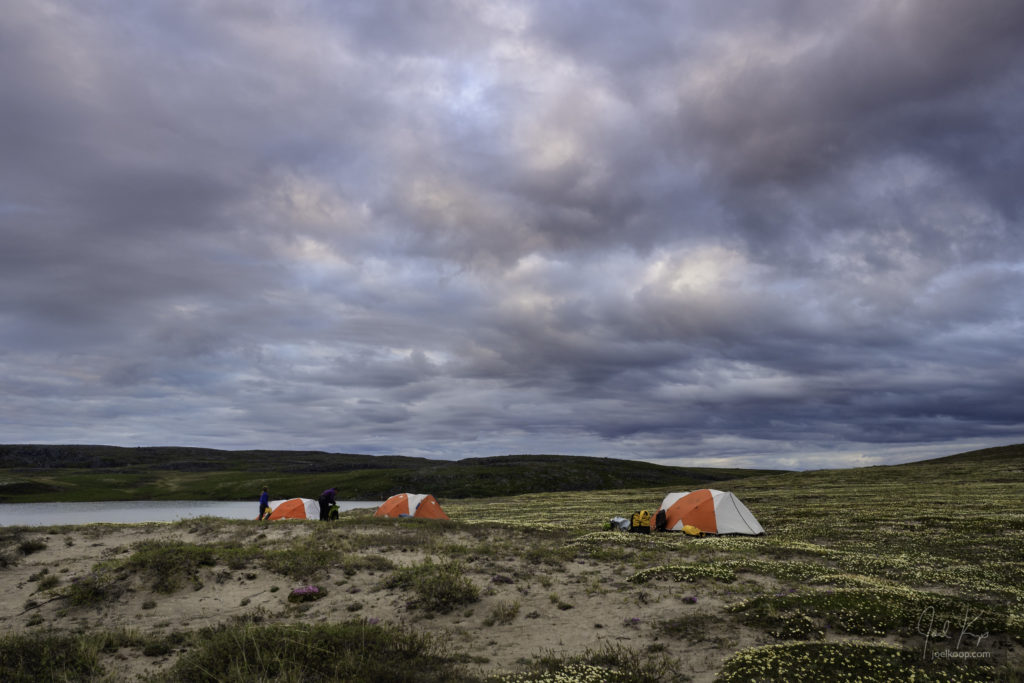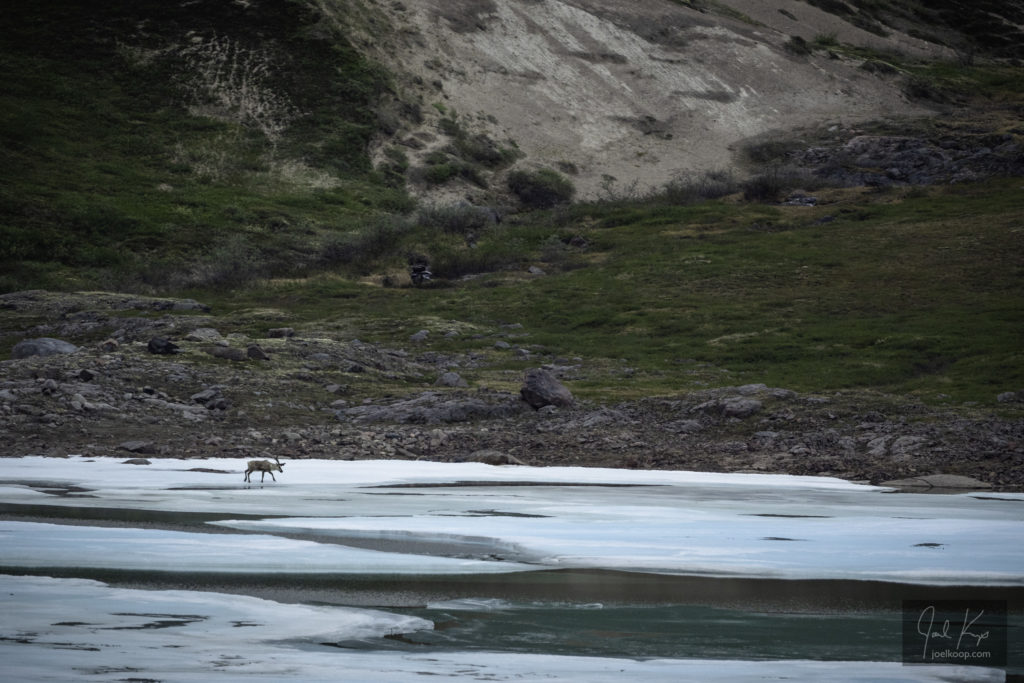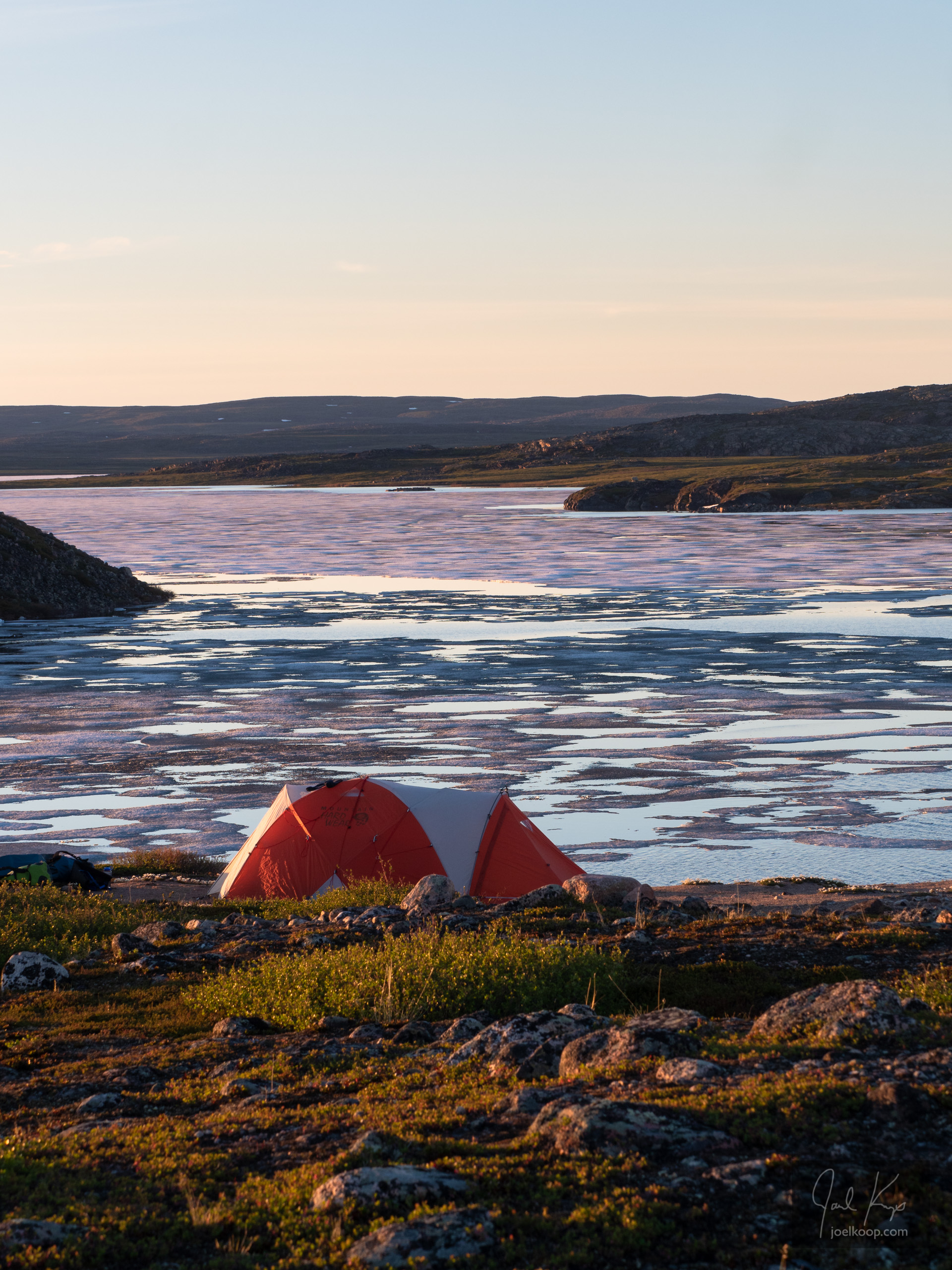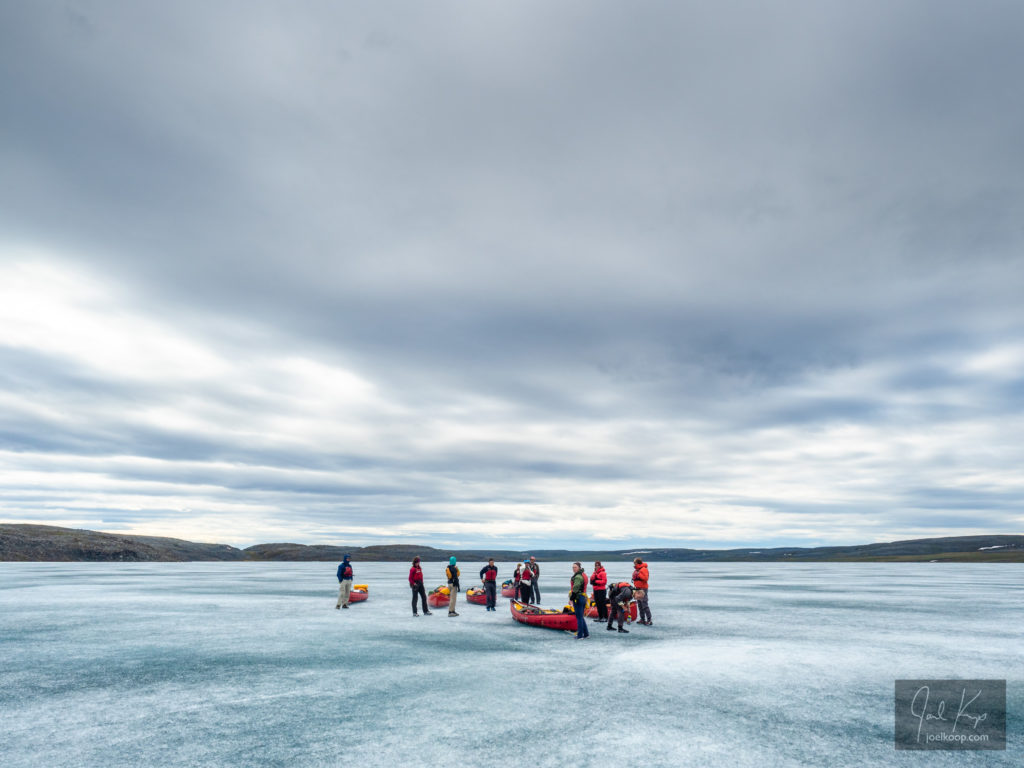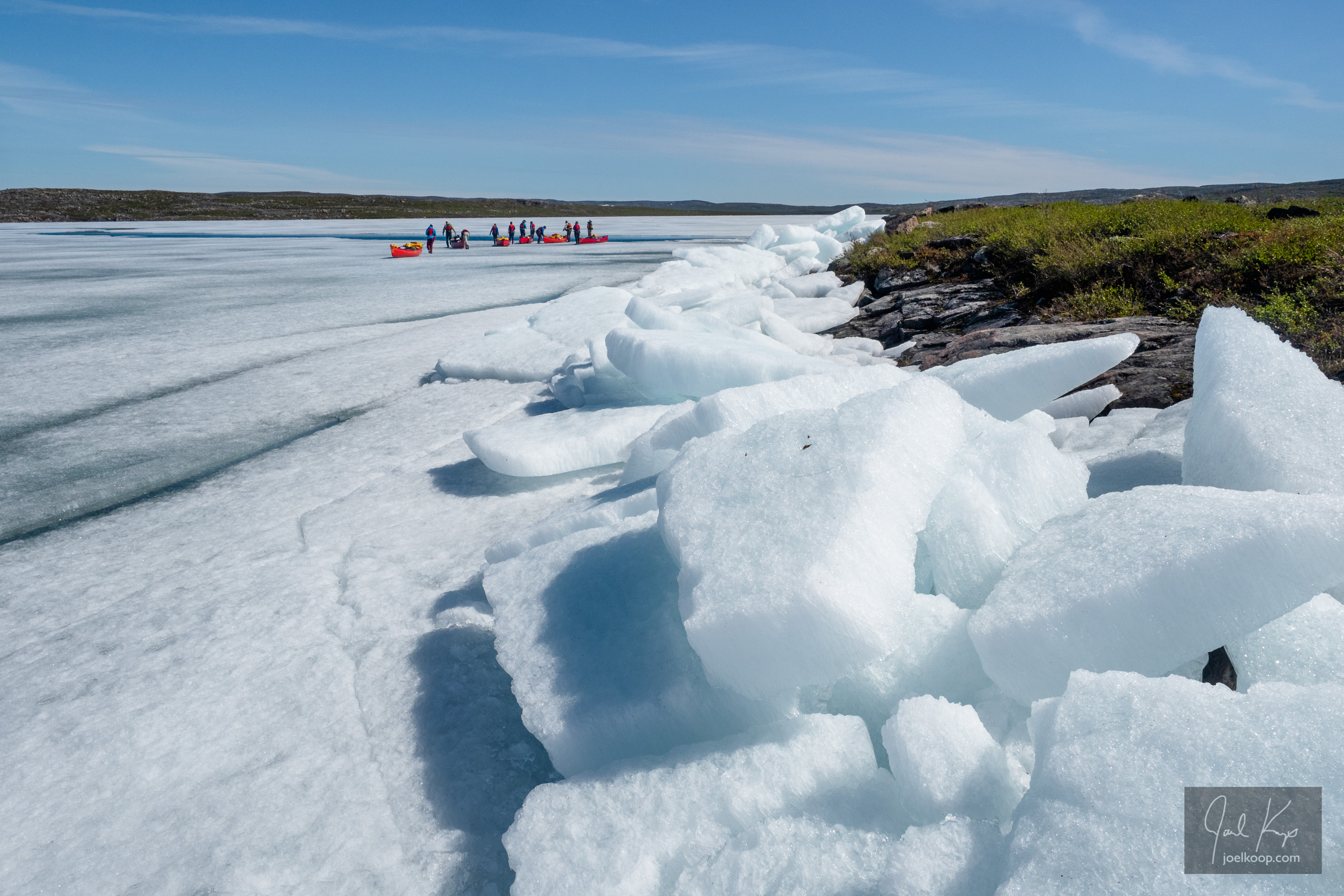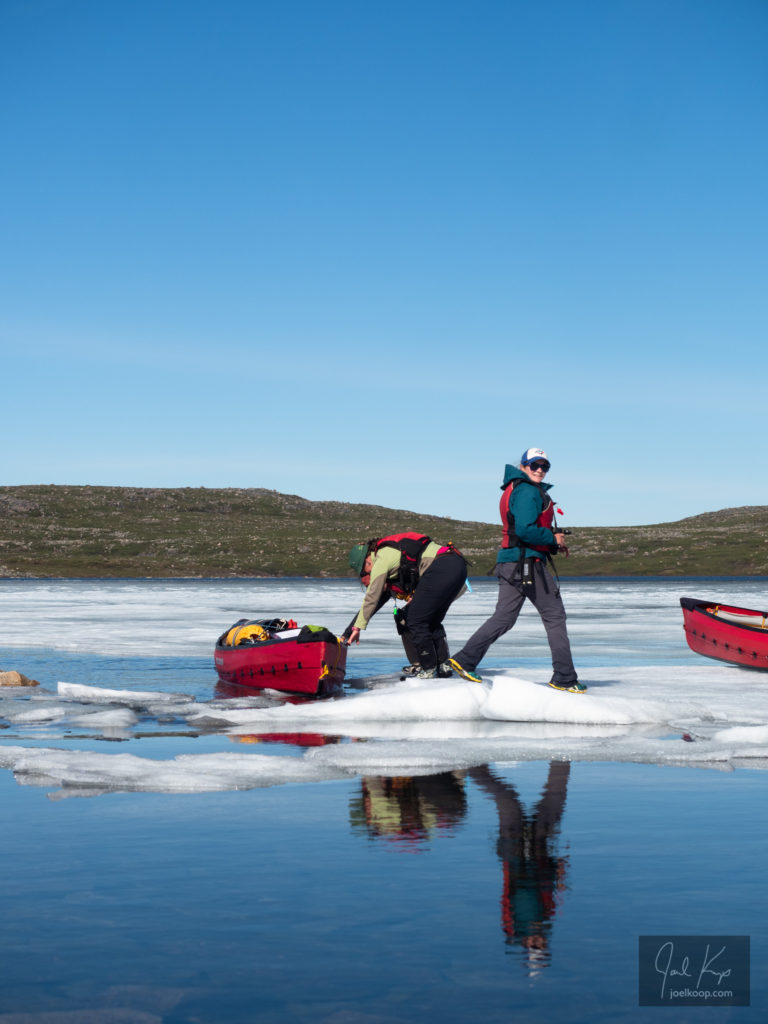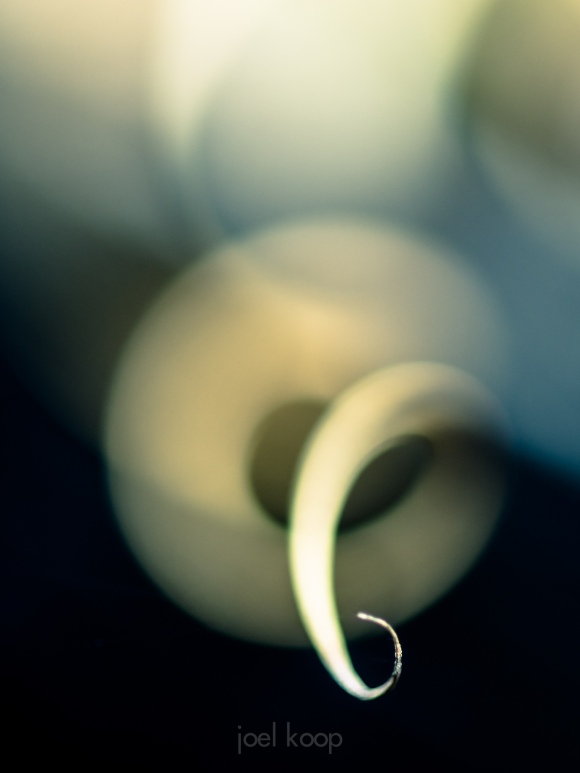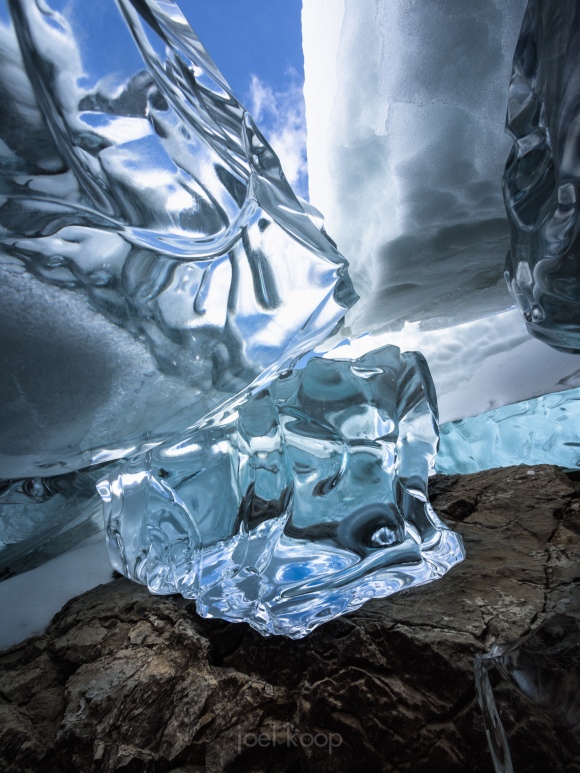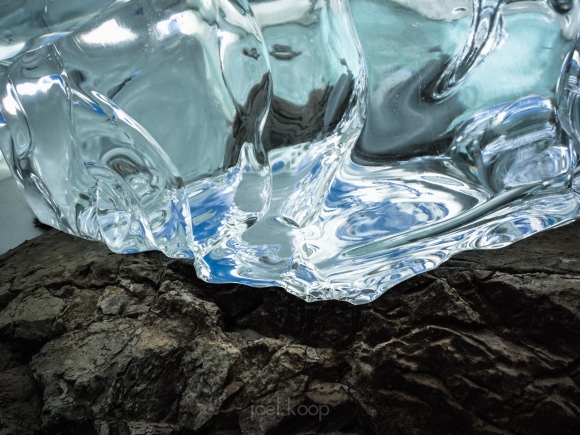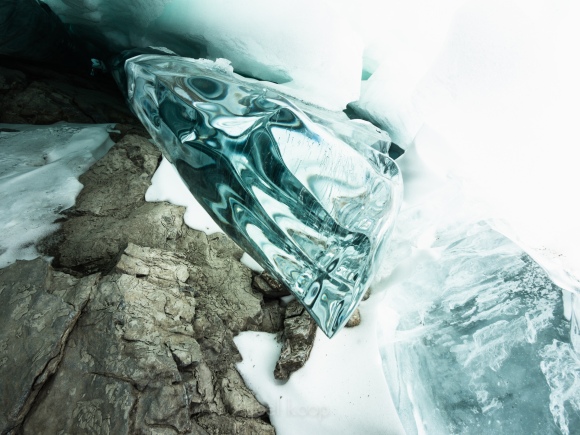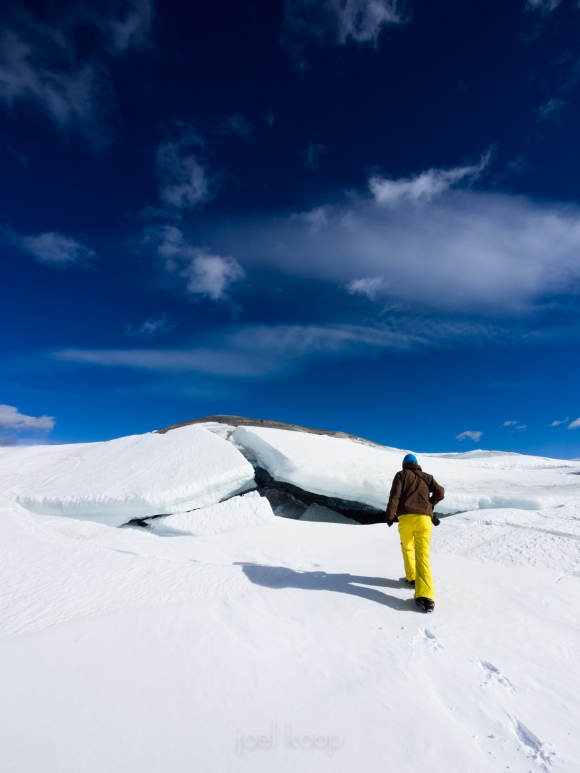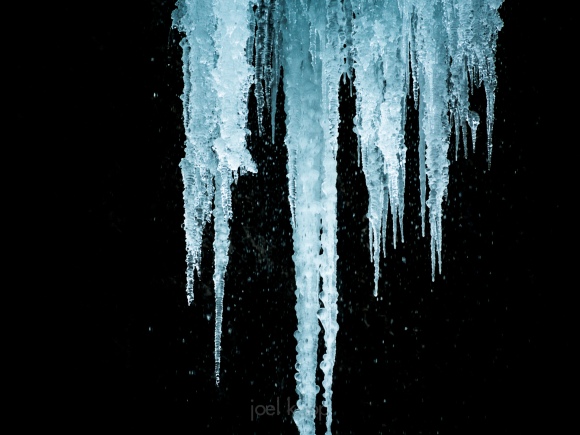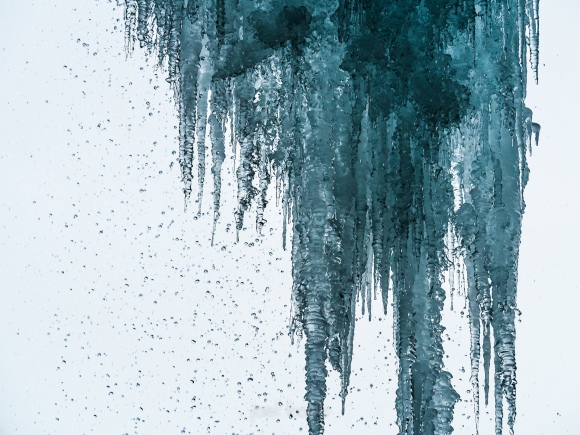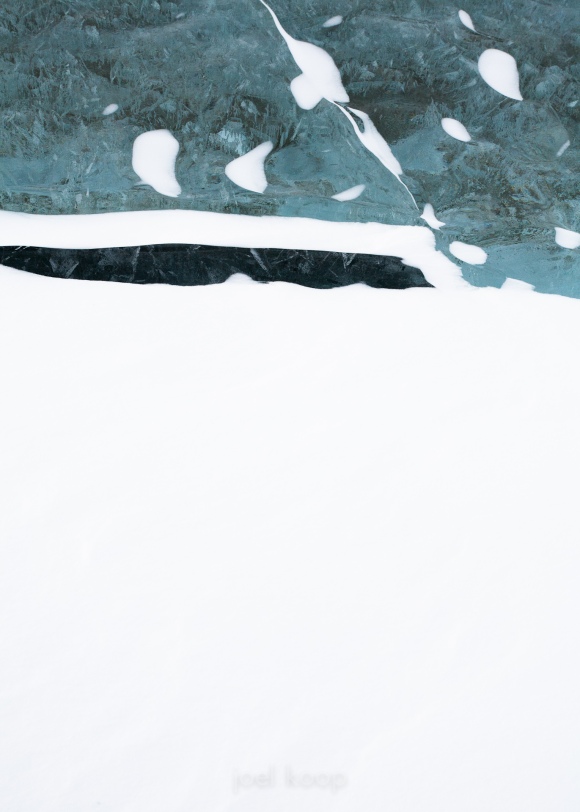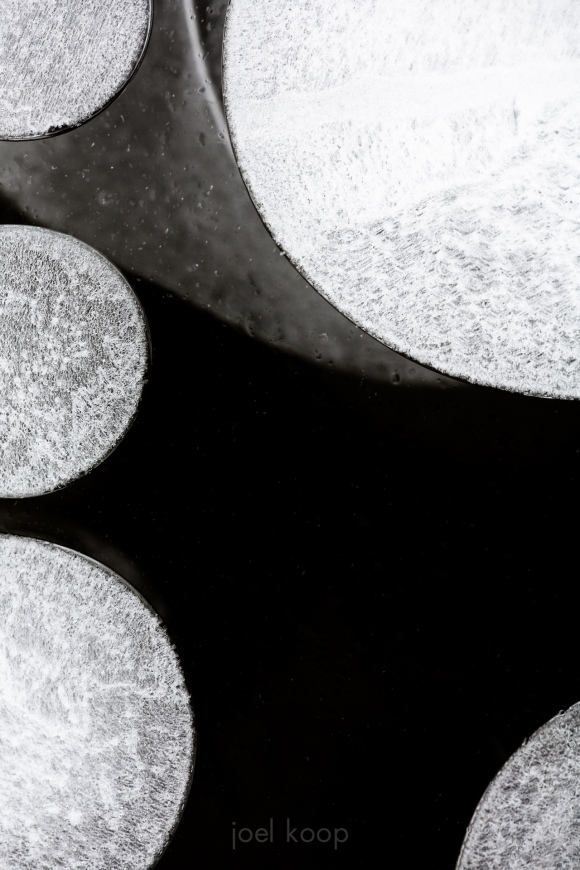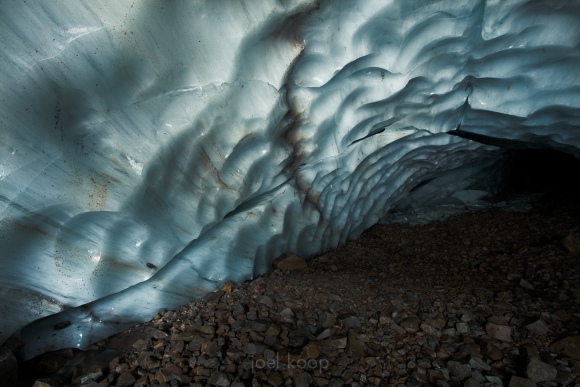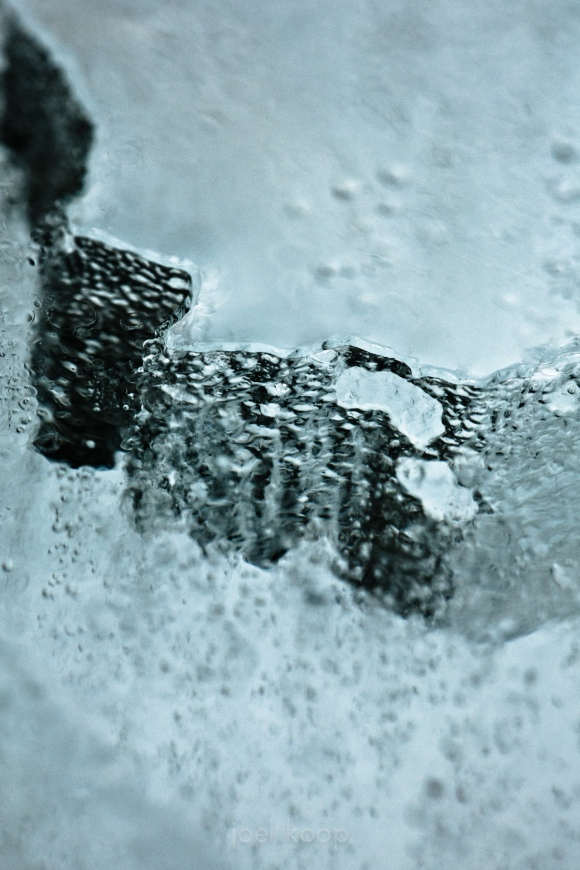If we’d done this trip twenty years ago there’s a good chance we’d have canoed through herds of thousands of caribou. The north is peppered with stories of watching thousands of caribou stream past for hours, but not recently (at least in this part of the arctic). The Hood River is in the Bathurst Caribou range – it actually flows right through the traditional calving grounds, although those may be changing a bit too. We were hoping to see caribou on this trip, but we knew the chances of seeing a large herd was small. In 1986 the Bathurst herd was around 500,000 caribou, in 2015 it was 20,000 and today it is 8,200 (source).
In late June we pulled our canoes over the last bit of ice on Esker Lake. We got to the end of Esker Lake and camped on a large point of sand covered with Mountain Aven (white flowers with a yellow center). Although it was a lot of work hauling our gear up the sandy bank, the camping spot was spectacular. After camp was set up, supper cooked and everyone fed, most people headed to bed. I was tired, but I couldn’t pass up a short hike. As I walked up the sandy ridge (I don’t actually think it was an esker – it was too large of a sandy area) I admired the large ice-covered delta where a small river flowed out into a bay on the lake. I got to a high point and sat down to appreciate the view. Then I spotted something moving.
There was a lone caribou picking its way over the ice of the delta. I watched for a while – it was slowly getting closer to our camp. I’d heard about someone holding up their arms too look like caribou horns so caribou wouldn’t be scared of them and I thought I’d try it even though the caribou was still at least 500m away. I stood up and put my arms up. I saw it turn its head towards me and pause. And then it started running – towards me!
I was surprised, but I kept my hands up as much as I could while still snapping a couple pictures. The caribou ran across the delta, right in between the tents in our camp and up the ridge towards me. It got really close and I couldn’t resist – I dropped my arms to take some photos. And the caribou stopped. I’d lost my antlers and now it didn’t know what to make of me. It studied me for a minute, tilted its head this way and that, and eventually decided that I wasn’t a caribou. I may be anthropomorphizing, but that was the saddest caribou I could imagine trotting away from me. It went over a rise and disappeared.
I felt so sorry for that lonely guy. He looked so hopeful for a friend and I’d let him down.
